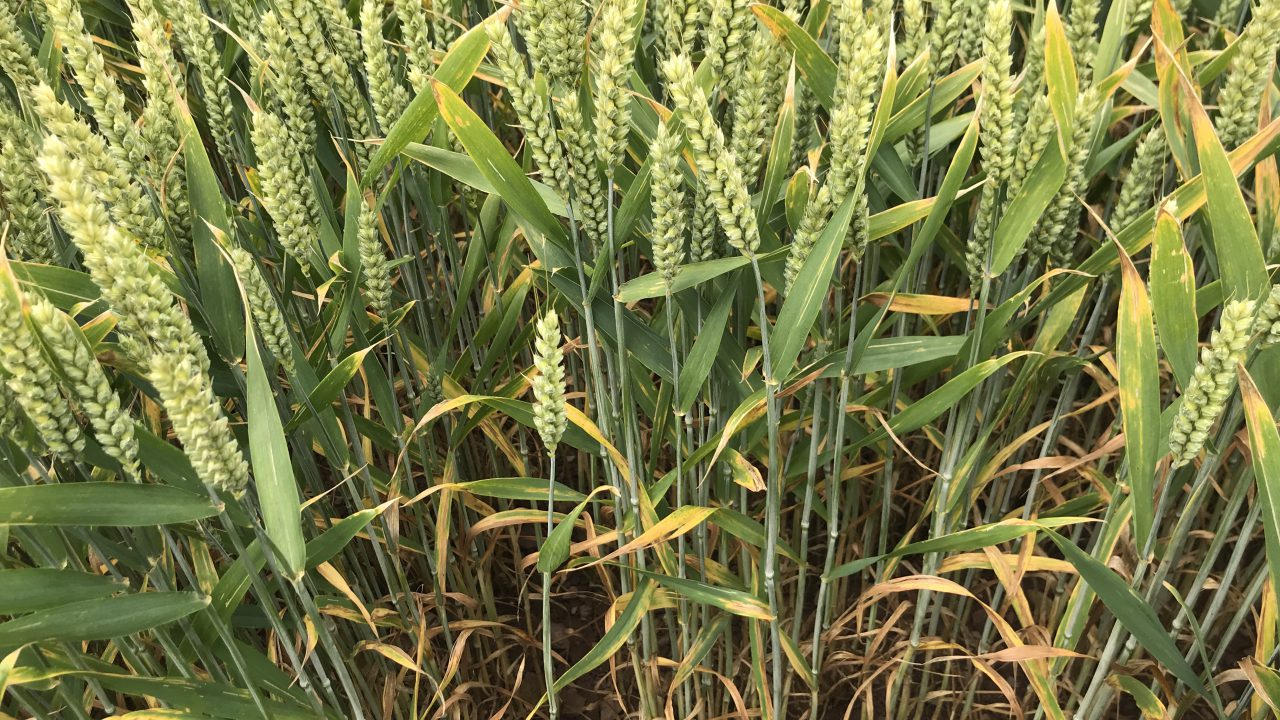According to tillage specialists, the introduction of new fungicides to control disease in winter wheat is welcome news.
However fungicide timing is still a key determinant of successful disease control in wheat. A fully emerged leaf 1 and leaf 3 are the key timings.
Research has shown that plus or minus seven days of a fully emerged leaf 1 can make a significant difference to disease control in high disease pressure situations.
Teagasc is confirming that the azole, Revysol, and the new QiI Inatreq are welcome additions to disease control in wheat. Both products have performed well against septoria in Teagasc trials and in the field.
However both are at risk of resistance and should only be used once per crop, at the rate required and in mixtures with a multisite like Folpet.
Other fungicides
Older products (Ascra Xpro, Elatus Era, etc.) still have a role in disease control but the foundation of good disease control is still applying products at the correct timings.
Turning to winter barley, Teagasc is advising that the latest stage to safely use a plant growth regulator (PGR) is the awns peeping. Terpal 1.2-1.5L/ha or Cerone 0.6-0.7L/ha are options, but growers are urged to watch latest timing.
The final fungicide needs to be timed at the awns emerging stage. It should consist of an Azole plus a SDHI/strob and 1.5L/ha of Folpet to assist in the control of ramularia.
Recent Teagasc experiments on the control of ramularia show that the best timing comes between GS45 (boots swollen) and GS49 (first awns visible).
An application of Folpet at GS59 (ear emergence complete) did not contribute to control.
Where winter oat crops are concerned, the final fungicide should be applied as the ear emerges from the boot in the body of the plants. This will target rust and mildew while also prolonging green leaf area.
Suitable product mixes include azole/SDHI/strobilurion combination, e.g., Elatus Era 0.75-0.8L/ha or Proline 0.5L + Amistar/Comet 0.5L +/- mildewicide or Boogie 1.0L/ha.
Spring barley
Applying a fungicide at the correct timing is the foundation for successful disease control in spring barley.
Teagasc research indicates that applying the first fungicide at mid/late tillering and a second at awn emergence can result in a yield increase of over 0.5t/ha in a high disease pressure year over delayed timings.
Growers should use a mix of active ingredients that target the fungus at no more than a half rate of each of the individual components. Folpet should be included at 1.5L/ha to assist in the control of ramularia.
According to Teagsc, all fungicides have strengths and weakness, so it is important to match the correct fungicide with the varietal characteristics.
All current spring barley varieties contain the mildew resistance locus (mlo)-based powdery mildew resistance so the inclusion of a specific mildewicide is rarely warranted.
It is essential to walk the crop beforehand and then decide on fungicide choice and rate in conjunction with the varietal characteristics.
A mismatch of fungicide and variety can lead to either poor disease control or unwarranted fungicide use.
